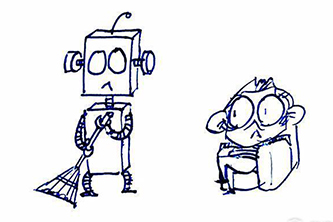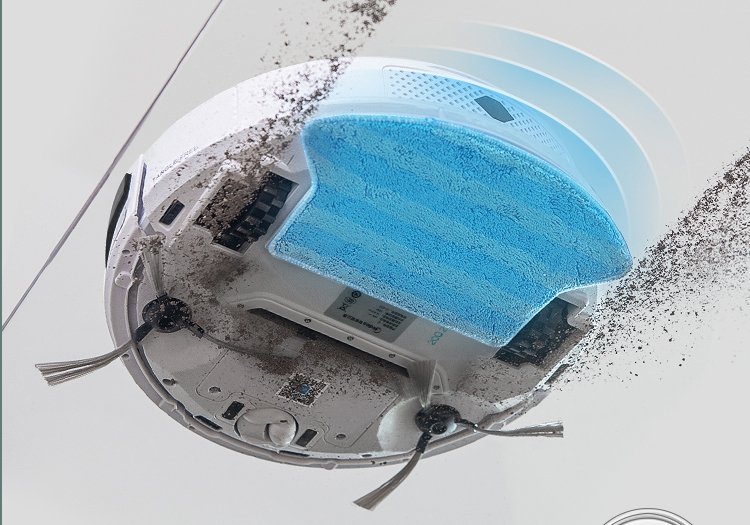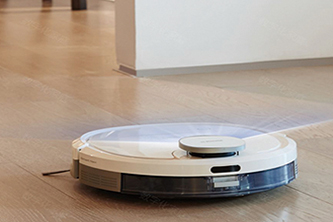With the explosive development of sweeping robots over the years, sweeping robots have become an important part of smart homes and have become standard equipment for many families. In fact, sweeping robots have a history of more than 20 years. They have undergone several major technological changes, and gradually formed some mainstream functional configurations, and their prices have also been significantly reduced. Let's take a comprehensive look at the history of the development of robot vacuums, so that we can have a deeper understanding of the entire robot vacuum industry.
1. In 1997, the first generation of sweeping robot was born in Sweden Electrolux Trilobite professional home appliance manufacturer, creating a precedent in the sweeping robot industry. The machine adopts a single roller brush and a borderless brush design at the rear of the machine, and has the functions of automatic recharging without electricity and anti-dropping.
Advantages: automatic recharge, anti-drop design, is a creative product.
Disadvantages: The reaction speed, computing speed and machine travel speed are relatively slow, resulting in low cleaning efficiency. The design of the fuselage is thick and expensive, so the market is not concerned.
2. In 2001, the British black technology company Dyson (Dyson) designed a sweeping robot named DC06. This vacuum cleaner is equipped with more than 70 sensors, two on-board computers, and has powerful suction and accurate detection.
Advantages: strong suction, with strong intelligent functions.
Disadvantages: The price is expensive, it costs US$3,000 (about 20,000 yuan), and the thickness of the machine is relatively thick, which is difficult to popularize.
3. In 2002, the American technology company iRobot launched the Roomba sweeping robot. Once this family-type sweeping robot was launched, it was loved by consumers and sold 60,000 units, officially starting the explosive development stage of sweeping robots.
Advantages: The thickness is less than 12 cm, the side brush is added to assist cleaning, the cleaning ability has been improved, the style and function are gradually accepted by the public, and many functions and designs are still in use today.
Disadvantages: random collision, low coverage, weak suction.
Comment: Roomba sweeping robot reduces the thickness of the fuselage, increases the side brush, and improves the cleaning ability of the corners, but it is always random, with low coverage, and it is called the big cleaning algorithm, which has a natural disadvantage.
4. Taking into account the serious omission of random models, iRobot has launched another auxiliary positioning sweeper called a lighthouse. Due to the extremely high requirements for the placement of lighthouses and the high price, the market has not been well promoted.
Advantages: The new positioning technology effectively increases the cleaning coverage of the sweeping robot to 99%.
Disadvantages: The location of the lighthouse is extremely demanding, requires regular charging, and is expensive.
5. In 2014, Dyson (Dyson) designed a sweeping robot named 360Eye, which is the first camera-positioning planning sweeping robot on the market. It uses the camera mounted on the top to observe and analyze the surrounding environment in all directions, use algorithms to obtain a map of the room and make navigation, and judge the current moving route according to the position change of each landmark in the front and back images, and build the environment The model is updated and adjusted.
Advantages: It solves the positioning problem, has path planning, and improves the cleaning coverage.
Disadvantages: Affected by light, it is dark and cannot be cleaned autonomously.
6. Around 2013, companies such as Taiwan’s Pusannick, Hunan Granbo, Shenzhen Yinxing, and Jiangsu Cobos launched gyro-navigation sweeping robots. Since then, functions such as path planning and intelligent navigation have quickly entered the market and have been well received by everyone. like.
Advantages: path planning, bow character cleaning, memorizing routes, high coverage (up to 98%), intelligent leakage, indoor positioning and navigation.
Disadvantages: It cannot be cleaned at breakpoints. It needs to be matched with a physical virtual wall to clean the area.
7. Laser scanning positioning. Neato sweeping robot was launched in 2010. It uses a 360-degree rotating laser rangefinder to scan the surrounding environment and perform real-time positioning and environment map construction (SLAM), based on which reasonable planning and cleaning are carried out. route. Laser navigation is also the development direction of all high-end sweepers in recent years. For example, Rock, Cobos, and iRobot have developed and sold products in this area.
Advantages: high coverage rate, strong cleaning ability, the first breakpoint continuous scanning.
Disadvantages: The price is 2 to 3 times that of the ordinary domestic machine, and the body thickness is about ten centimeters.
With the development of technology and the continuous growth of the industry, more and more sweeper brands such as Cobos, Xiaomi, JADI, Pursonic, Samsung, neato, etc. have joined in. Each has its own positioning and planning system. We look forward to The sweeping robot industry has made more breakthroughs, making it convenient for millions of families.


